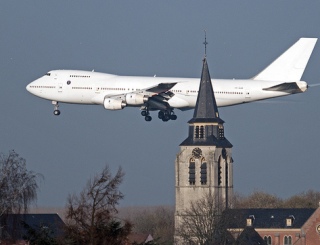 Airfreight shippers placed higher demand on airlines in March year-over-year, but volume growth is expected to press pause in the coming months as improving trade conditions in the Western economies is offset by a slowdown in China’s economic expansion.
Airfreight shippers placed higher demand on airlines in March year-over-year, but volume growth is expected to press pause in the coming months as improving trade conditions in the Western economies is offset by a slowdown in China’s economic expansion.
March tonnage was up 5.9 percent compared to a year ago and capacity grew 3.4 percent. While a significant improvement in volumes compared to March 2013, much of the growth took place in the final quarter of 2013, according to data from the International Air Transport Association (IATA).
“Since the beginning of the year, air cargo volumes have been basically flat. This plateau in volumes is consistent with the recent pause in improvements to business confidence and world trade,” IATA said.
While business conditions in the U.S. and Europe provide ground for cautious optimism for a resumption of growth in the months ahead, the deceleration of Chinese manufacturing activity—now into its fourth month—is keeping cargo growth in check. The situation has already impacted exports from emerging Asian countries, which contracted in February, said the organization.
“Cargo markets had a boost in the last quarter of 2013, but have now levelled off. It is a competitive industry with growing capacity chasing weak demand. The business cycle will eventually swing upwards,” said Tony Tyler, IATA’s director general and CEO.
For Asia-Pacific carriers, demand grew 6.9 percent in March compared to a year ago. Some of the growth reflects a resumption of business activity after the break for the Lunar New Year. But IATA predicts that the continuing slowdown of Chinese GDP growth “is likely to ultimately impact trade growth and air freight demand for local carriers.”
To continue its upward trajectory, the air cargo industry needs to improve its value proposition if it is to attract growth when markets improve, said the group. This includes cutting the end-to-end airfreight shipment time, which has remained unchanged at six to seven days, by 48 hours by 2020, to enhance the competitiveness and value of air cargo.
“Modernizing air cargo processes and infrastructure offers the potential to cut end-to-end shipping times by up to 48 hours. We cannot let market doldrums hold us back from this critical competitive gain,” said Tyler.
Photo: Pieter van Marion




